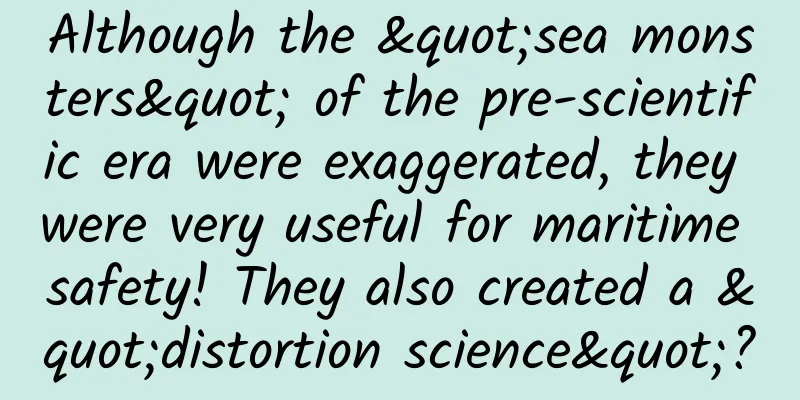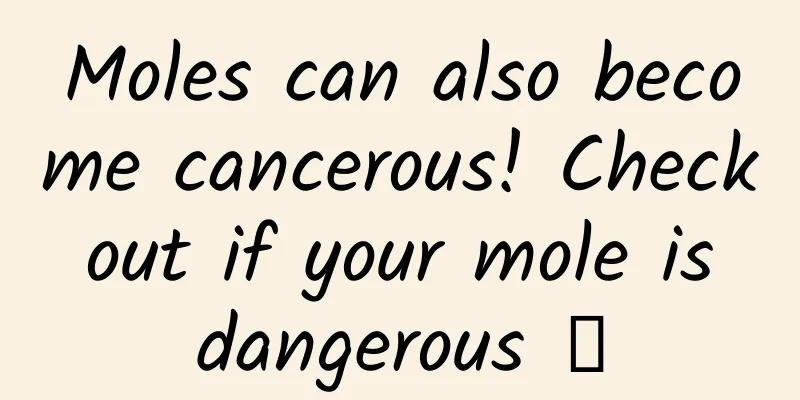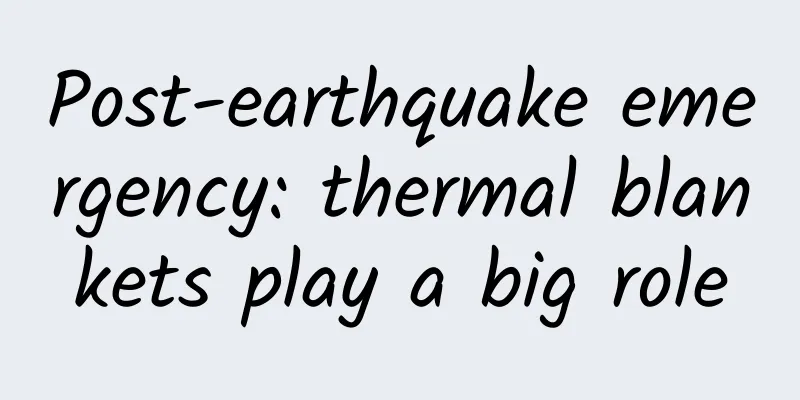Although the "sea monsters" of the pre-scientific era were exaggerated, they were very useful for maritime safety! They also created a "distortion science"?

|
© Library of Congress Leviathan Press: Those who have played Octopath Traveler will probably notice the strange sea beasts in the game map. These marine creatures seem to have some origins. The designer of this map, Francesca Baerald, has participated in the production of maps for The Lord of the Rings and A Song of Ice and Fire, and has a special liking for concept maps. Octopath Traveler game map drawn by Baerald. © Francesca Baerald There is, in fact, a tradition of these sea monsters. You can see traces of Pliny the Elder's Natural History, Magnus's Atlas, Ortelius's Cap d'Orbis, and Conrad Gessner's History of Animals. I have always been fascinated by these pre-scientific sea monsters, in part because this "fictionology" - or I prefer to call it "anamorphosis" - is mixed with so many interesting things. Off the coast of Norway, a giant snake with a dragon's head entangled a helpless boat, a mammoth-sized monster grabbed a seal near the Faroe Islands, and off the coast of Scotland, a giant lobster clamped its claws around a man as he struggled to survive. Polypus (meaning "many-legged") was used to describe many creatures, from lobsters to centipedes to octopuses. Magnus drew a giant lobster in his chart, but his text described an octopus, which also shows the confusion people had about marine life at the time. © Library of Congress The images appeared in the Carta Marina in the late 1530s, which became the definitive guide for cartographers, writers and scholars studying Europe’s seas. The map dominated for the next 50 years, but it wasn’t until a century later that experts admitted that some of the depictions were unrealistic, and it wasn’t until the early 18th century that new maps began to exclude certain monsters. “A lot of the imagery looks quite fantastical. It’s easy to imagine that the cartographers were making it up on the spot,” said Chet Van Duzer, a map historian and author of Sea Monsters on Medieval and Renaissance Maps. Nautical chart. © Library of Congress The "Atlas" was created by Swedish Archbishop Olaus Magnus. He did create the appearance of some sea monsters - most of which are what we now know as whales. However, Van Duzel said that many of Magnus' monsters were borrowed from the illustrated encyclopedia. Some of the images in the work can be traced back to descriptions in Pliny the Elder's Naturalis Historia in the first century AD. Magnus’s “Atlas” is one of the earliest European geographical masterpieces, and it was created at a time when people were curious about science and discovery, but still had fantasies about the natural world. At the time, people believed in creatures they had never seen, such as dragons and sea serpents—Magnus’s authority, combined with respect for the printed word, made even the wildest depictions of whales seem realistic, Düzel said. Production of nautical charts Magnus's map was large. The original map covered 23 square feet (about 2.1 square meters) and showed a flat but detailed northern Europe. This included modern-day Denmark, Estonia, Finland, Iceland, Latvia, Lithuania, Norway, Sweden, and the northernmost part of the British Isles. Magnus was born in Sweden in 1490 into a distinguished family and attended university in Germany. The Reformation forced Magnus to move to Italy, where he created the Atlas. After being appointed archbishop in exile, Magnus spent 12 years working on the map, which was not printed until 1539. The map is closely tied to his career and education. Some of the monsters Magnus depicted date back to the Old Testament, such as the sea serpent, then called Leviathan, which is mentioned in the Psalms, Job, and Isaiah. In The Underworld: Journeys to the Depths of the Oceans, Susan Casey writes that he filtered the map through the lens of church doctrine. Magnus’ timing was perfect, she added. Europe was entering the Age of Exploration, and the development of printing technology brought fantastic ideas to an audience hungry for more information. Few Europeans could read in the century since the invention of the printing press, and Magnus’s map required no literacy skills, providing people with images of monsters they knew from the Bible or oral tradition. In the Atlas, sea monsters serve more than just a decorative purpose, as they do in other Renaissance maps. In some cases, Van Duzel says, they serve as warnings of terrifying monsters lurking in dangerous seas. Overall, they reflect the great anxieties of the time about the dangers of sea travel. The ship destroyed by the sea monster symbolizes the extreme danger of sailing on the high seas. © Olaus Magnus Their concerns were not without reason. In Scurvy: How a Surgeon, a Mariner, and a Gentleman Solved the Greatest Medical Mystery of the Age of Sail, Stephen R. Brown writes that scurvy alone was responsible for 50 percent of the mortality rate on long voyages in the 16th century. Accidents, drownings, and infectious diseases meant that many sailors ended up dead at sea. The ocean is an incredibly dangerous place, and Magnus's map reflects people's fear of the unknown and their desire to tame it. Sea orms Off the coast of Norway, Magnus depicts a bright red sea serpent attacking a tilting ship as if about to be dragged into the water. The Sea Serpent was based in part on legend, including biblical descriptions of a snake-like sea monster. It was also based on information Magnus had gathered from sailors who described a giant monster off the coast of Norway. They claimed the sea serpent was 200 feet long (about the length of five city buses) and 20 feet in diameter (about the height of a subway tunnel). The sea snake could be a giant squid, or a pinniped, such as a seal or sea lion. Others have suggested it could be a shark, whale, or oarfish. © Olaus Magnus Scientists in the 19th century tried to determine what sea serpents might be in real life, and according to Joseph Nigg, author of Sea Monsters: The Lore and Legacy of Olaus Magnus's Marine Map, there are possibilities that these creatures were giant squids, or pinnipeds such as seals or sea lions. Others have suggested that sea serpents could be sharks, whales, or oarfish. Artist's rendering of a "sea serpent" found by the frigate HMS Daedalus in 1848. The serpent is said to have swam on the surface of the sea for about 20 minutes following the ship. © wikipedia An oarfish is spotted in Toyon Bay on Catalina Island, off the coast of California, in October 2013. © Courtesty of Catalina Island Marine Institute Magnus wrote in his 1555 book History of the Northern Peoples that sea serpents could stick their heads over the side of a ship and pull unsuspecting sailors off the deck and into the sea. He also claimed that sea serpents could slither on land and devour livestock, or slither into the sea to prey on marine life. Other historians and cartographers had recreated sea serpents in their work as early as the 1700s, Nigg said. Pristers The sea monsters in the Atlas are generally malicious and seem determined to harm any humans they encounter. The sea priests are particularly dangerous and aggressive. Magnus wrote in his 1555 book that they are up to 200 feet long, have broad forked tails and flipper feet, and have faces resembling warthogs and two blowholes on the top of their heads. Magnus wrote in his 1555 book that the sea priest was up to 200 feet long, had a broad forked tail, flippered feet, a face resembling a warthog, and two blowholes on the top of its head. © Olaus Magnus Van Duzel said the monster, like most other marine creatures in the Atlas, was based on descriptions of whales, which were familiar to people at the time, but they usually only saw them at the surface. The map also depicts a stranded whale being gutted for its flesh and bones (below). © Olaus Magnus Magnus records that sea priests could slam their tails into a ship, or sink it by throwing themselves onto the deck. This swordfish-like creature is attacked by a rhino-like creature. The swordfish are said to swim under the boat and cut into the hull, causing it to sink. © Olaus Magnus Sailors tried to scare off the attacking sea monster with scary horn sounds and empty barrels. © Olaus Magnus Van Duzel says Magnus included information in his Atlas on how to protect yourself from the sea priests. In the waters off Iceland, two sea priests charge at a ship. "At the back of the ship, you see a man standing there. You might imagine he has a gun, but it's actually a trumpet," he says. " Blowing a trumpet is one of the few effective ways to scare off a sea monster. " Other cartographers agree, and Nigg says they have reproduced Magnus's sea priests on their maps for decades. Island whales According to the Atlas, the sea between Norway and Iceland is extremely dangerous. Off the Norwegian coast, Magnus depicts the dangerous "Moskstraumen", a real place that still exists today. Between the sea serpent and the sea priest, Magnus places the island whale, a very deceptive beast. Magnus depicted the dangerous "Moskern Whirlpool" in his "Sea Chart". © wikipedia Illustration from Edgar Allan Poe's novel A Descent Into The Maelstrom, by Harry Clarke (1889-1931), published in 1919. © wikipedia The island whale is a legend that dates back thousands of years, dating back to a letter from Alexander the Great to Aristotle around 300 AD, telling the story of two sailors who rested on what they thought was an island. They went ashore, set up camp, and built a bonfire. That's when the nightmare began. "It turned out that it wasn't an island, but a giant whale. The whale sensed the fire and sank into the deep sea, taking the men with it," Van Duzel said. Unsuspecting sailors cook off a sea monster off the coast of Iceland. © wikipedia On the "chart," the Inselwhale resembles a cross between a stegosaurus and a rhinoceros, but it was likely just the whale we're familiar with today. People at the time were more inclined to believe what they read, if they could read, Van Duzel said. "There was a lot of respect for the printed word and the accompanying illustrations." Some monsters, like the sea serpent, took more than a century to be debunked. Many others faded from maps over the next century as cartographers were able to incorporate more realistic representations of sea creatures. Sea pig (monstrous pig): If pigs could swim, this would look like this. The creature was allegedly discovered in the North Sea in 1537. The sea pig was compared to pagans who distorted the truth and lived like pigs. © wikipedia This green mass is not a sea monster, but rather ambergris. © wikipedia A giant sea crab attacks a sea snake. © Library of Congress Kraken: In terms of modern popular perception, the general public generally believes that the Kraken is a giant squid. This sea monster is not only rumored in Scandinavia, but also in Norse mythology. © Library of Congress The Alecton attempts to capture a giant squid off Tenerife in 1861. © Sea Monsters Unmasked A whole giant squid was caught in 1981. © Remeslo Editor’s note: Currently, most scholars consider Abraham Ortelius’ Theatrum orbis terrarium to be the first modern atlas. Theatrum orbis terrarium was printed in 31 editions between 1570 and 1612. The atlas includes numerous illustrations of sea monsters. Perhaps it’s not surprising that the first modern atlas would include illustrations of sea monsters and other mythical beasts. Ortelius’s sea monsters also had some influence from Magnus. Sea monster in "Cape of Orbis". © Wikipedia By comparing "Cape of the Orbis" with Magnus's "Sea Chart", it is not difficult to find that the sea monsters that often attack humans in "Sea Chart" often appear in the form of harmless specimens in "Cape of the Orbis". Steipereidur, a gentle whale, will help fishermen when they are fighting with other whales. Therefore, there is a ban on killing this kind of whale. At least 100 cubits long (about 150 feet, 46 meters). © Wikipedia Skautuhvalur, covered in bristles and bones. It resembles a ray, but much larger. When it appears, it is like an island, and can overturn boats with its fins. © Wikipedia According to the Icelandic Ministry of Agriculture and Fisheries, there are only two species of rays in Icelandic waters, and neither is strong enough to capsize a boat. Ortelius's image may have been influenced by Magnus. Although there are some similarities in the image, the description is completely different. The rays described by Magnus are seen as paragons of virtue. In the "Sea Chart" (above), rays are shown rescuing a fisherman who has fallen overboard and been eaten by hungry fish. © Wikipedia Unnamed sea monster from Cape Orbis: It is described as "the largest of the whale species, and seldom appears above water. It is more like an island than a fish. Due to its great size and weight it is unable to pursue smaller fish, but it is able to prey on many by its intelligence." © Wikipedia Hroshualur: "That is, the sea horse, with a mane that hangs down from its neck. It often causes great harm and fright to fishermen." Interestingly, the Hroshualur depicted on the Cape of the Theatre of Orbis does not come from the Atlas. It is derived from a much older origin, the Greek mythological seahorse (Hippocampus). Renaissance artists often used the seahorse in their illustrations. The seahorse was associated with Poseidon (the Greek god of the sea) and later with his Roman counterpart, Neptune. © Wikipedia Drawing of a seahorse by Swiss naturalist and bibliographer Conrad Gesner (1516-1565). © Wikipedia English whale: The "English whale" described in the "Cape of Orbis" has no teeth, but it actually has teeth. Ortelius' illustration is not based on a species called "English whale". Instead, it is an illustration of a report of a specific whale that stranded near the mouth of the Thames on August 27, 1532 (pictured above). He describes the proportions of this whale in great detail, including its mouth and body. He says it has long "wings" that are half the length of its body. The fish has no teeth, long barbels on its upper jaw and a long tongue. And it has a huge penis. Most modern people would be able to recognize from his description that this is some kind of male baleen whale. Ortelius' illustration shows workers chopping up and processing the stinking whale carcass. Ortelius seems to have had some trouble translating his report into images. The "wings" become the feet of a dragon, and the baleen is drawn as a series of triangles that look a lot like teeth. © Wikipedia Nahval: In the ocean north of Iceland, the monster described in the "Horn of Orbis" is "a kind of fish, commonly called Nahval. If someone eats this fish, he will die immediately. It has a protruding 7-cubit tooth on its head. People think it is a good antidote and a strong medicine against poison. This monster is 40 cubits long." Later generations generally believed that its prototype was the narwhal. © Wikipedia Staukul: The Dutch name for Springual was that it was observed to stay upright on its tail for a whole day on the surface of the sea. Staukul was so named because of its ability to jump. It was a very dangerous enemy of seafarers and fishermen and a voracious predator of human flesh. "Springing whale" was another name for the killer whale. The presence of two distinct names for killer whales in the literature of the time suggests that information may have been confused by different sources. Ortelius would have known about the killer whale, as he and many other artists depicted it, but the description of the "springing whale" was so different that he never considered them to be the same creature. © Wikipedia Rostunger: It looks like a calf, has four short legs, can walk on the seabed, has thick skin that cannot be pierced by sharp blades, and uses two tusks more than one meter long to hang on the rocks when sleeping. It can sleep for 12 hours straight and is suspected to be a walrus. © Wikipedia Ziphius is a corruption of Xiphias, which in turn is derived from the Greek word for sword. Ortelius was probably quite sure it was a swordfish, but he said it had an owl-like face. In fact, he did draw it that way (see above). © Wikipedia By Emilie Lucchesi Translated by tamiya2 Proofreading/tim Original article/www.nationalgeographic.com/history/article/carta-marina-renaissance-sea-monsters This article is based on the Creative Commons License (BY-NC) and is published by tamiya2 on Leviathan The article only reflects the author's views and does not necessarily represent the position of Leviathan |
<<: Although both are bubbling joy, the bubbles in champagne and carbonated drinks are different?
Recommend
Case Analysis | Alipay Huabei’s Marketing Tactics on Double 11 and Double 12
How does Huabei use various content marketing for...
Carbon Neutrality Industry Report
Carbon Neutrality Industry Report Resource Introd...
What is considered advanced Android? I suggest you master these points
Is Android development dead? [[277440]] Many peop...
Analysis of 7 short video channels including Taobao and Video Account!
Douyin, Kuaishou, Xiaohongshu, Taobao, Video Acco...
Activity operation: lottery activity gameplay design
The lottery originated from gambling and is a gam...
Event Operations: Avoid These 12 Pitfalls for Beginners
Regarding event operations , this article summari...
China Mobile to open 4G to virtual operators
[[121346]] Xu Gang, vice president of China Mobil...
The nose of Spring Festival Gala mascot Long Chenchen comes from "the earliest China"?
Last December, the CCTV 2024 Spring Festival Gala...
A comprehensive summary of Android adaptation problems
Support multiple screens Android runs on a variet...
For WeChat, micro-business is both a treasure and a locust
Wechat merchants should be thankful that they hav...
[Creative Cultivation Program] The amazing Nobel Prize-winning experience originated from the love of mathematics in youth
Author: The Nutcracker Studio The 2020 Nobel Priz...
Writing 30,000 articles a month! Will Google's news robot put traditional media out of business?
With the development of artificial intelligence, ...
How does the wedding photography industry use TikTok? Case Study
"For wedding photos that only happen once in...
The most powerful Tesla can accelerate from 0 to 100 km/h in less than 2 seconds, but you can only see it on the track
"My P100D can accelerate from 0 to 100 km/h ...
Financial management product launch tips: Why not worry about short-term channel costs?
With the listing of Internet financial platforms ...









